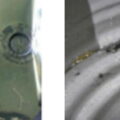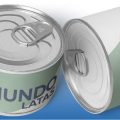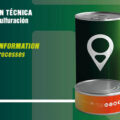Sulfide staining of canned food is caused by chemical reactions between the metal components of the can and sulfur compounds present in the food or in additives used during the production process.
When protein-rich foods, such as meats, fish, crustaceans, mollusks, legumes, maize, aleaceous products (garlic, onions) and cruciferous vegetables (cabbage, mustard), are heated, their proteins can break down and release sulfur ions. These ions can react with the iron and tin in the can, forming dark-colored sulfides that stain the can and, in some cases, the product itself.
In addition, in some situations, sulfuration may occur due to the use of sulfur compound additives in the early stages of the bleaching or preservation process, which have not been adequately removed from the product prior to packaging.
Although sulfide stains do not represent a sanitary risk, since the sulfides formed are harmless, they can affect the presentation of the product and generate commercial problems.
To avoid sulfide staining, anti-sulfur varnishes containing zinc oxide in suspension can be used. Zinc oxide binds hydrogen sulfide and is transformed into zinc sulfide, which is colorless and insoluble. These varnishes should not be used with acidic products. Varnishes without zinc oxide, but sufficiently impermeable to block the passage of hydrogen sulfide, can also be used.













